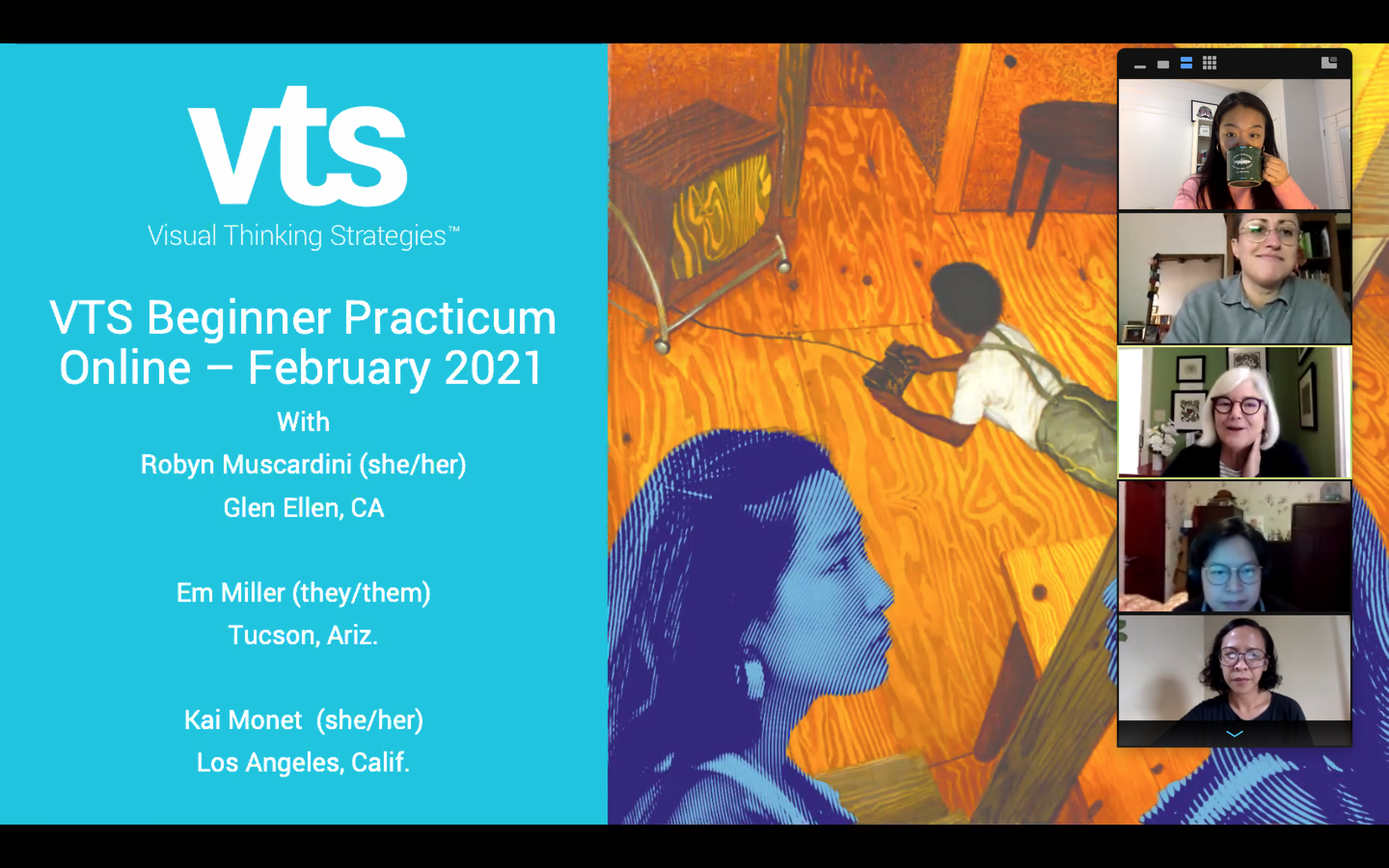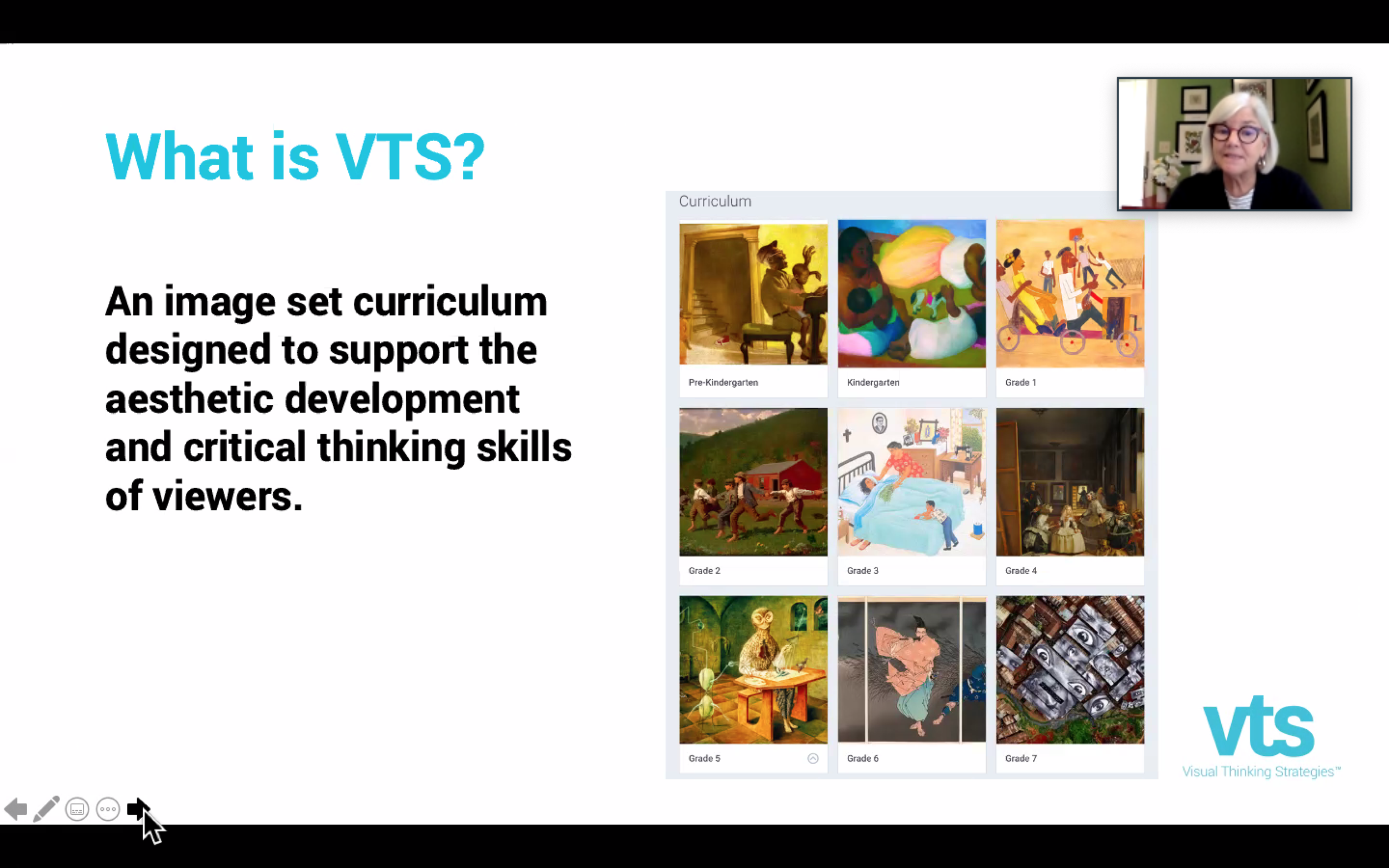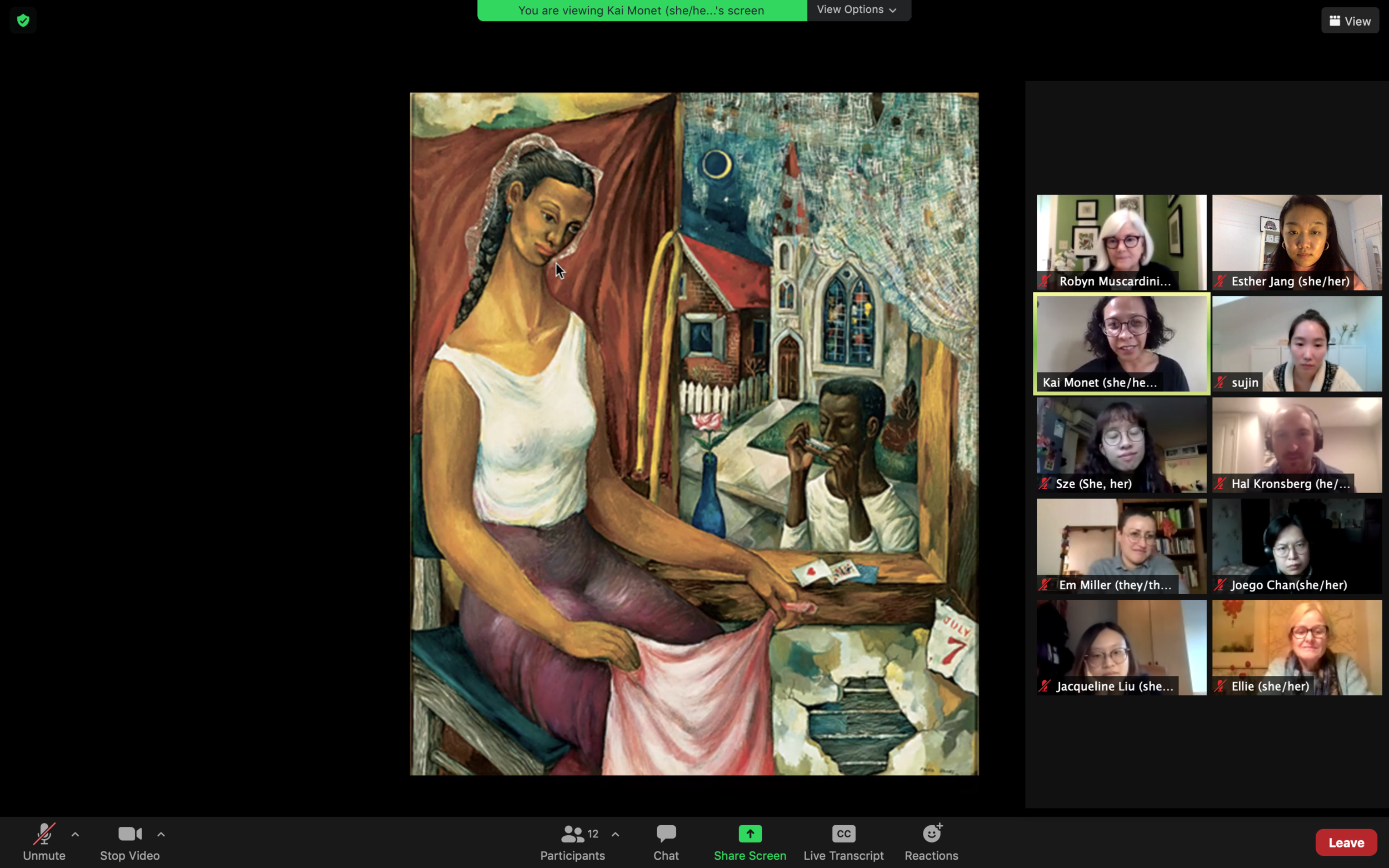VTS Beginner Practicum
Back in 2017, I went to Boston to participate in International Visual Literacy Association’s 49th Annual Conference at Lesley University. The theme was “Designing Visual Literacy Experiences”.
There were scholars, superintendents, and teachers from all over the world, and I was in awe of how many people have already been implementing visual literacy into their practicum. I finally met my tribe!
Philip Yenawine was the keynote speaker, and it was there that I was first introduced to Visual Thinking Strategies. While he was the Director of Education at MoMA from 1983-93, he co-founded VUE (Visual Understanding in Education) and co-wrote VTS curriculum with Abigail Housen, a cognitive psychologist at Harvard who studied how people think when they look at art.
I’ve been debating whether to take their certification program for years, and finally decided to begin in February 2021 for its Beginner Practicum. Hopefully as I practice more, I’ll be able to become a VTS Facilitator to Coach to Trainer.
So what is Visual Thinking Strategies?
It’s an image based curriculum that facilitates aesthetic development and critical thinking by asking three questions.




It was incredible to meet such a diverse cohort. There were museum educators from Hong Kong and Amsterdam, hospital educator from Boston, child psychologist from Baltimore and a painter from South Korea. Our first VTS image discussion was even more amazing!!!
Kai facilitated with the painting in the last slide, and I loved my lightbulb moments when other people saw things that never crossed my mind. It was great to see these visual evidences together, build upon each other’s observations, and create a coherent reality. (I’m really attracted to this idea of coming together to build one coherent reality because I think that’s the key where partisan divide can bridge. But that’s for another day, another post.) The moderators were also commenting on how even though they’ve facilitated this painting hundreds of times, there’s always something new people discover every time. Hence, there’s no finite ways of looking, and definitely no right or wrong way of interpreting! That’s why I loved that the context of the painting was never mentioned, which alleviated so much pressure to “get it right”.
This methodology shifts the entire dialogue from right/wrong knowledge to curiosity and discovery! It’s such a pleasurable experience to collectively have enough time and space to see one image. Not a video, not anything moving, but reading one single image.
Homework for Day—1 was reading chapter 1 ‘Permission to Wonder’ from Visual Thinking Strategies: Using Art to Deepen Learning Across School Disciplines by Philip Yenawine.
Below are some enlightening food for thought.
MoMA trustees and board of directors requested Yenawine accountability for the education department’s teaching, asking “visitors seem to like what you do, but does the teaching make any difference? Do people leave knowing more than when they came in?” Engagement wasn’t an issue, but museum goers weren’t enabled. Content didn’t stick.
How do you assess retention in art? If people can correctly recall which artist painted what in which period - would that be a successful retention of art?
Abigail Housen focused on “not what visitors know but how they use what they know.”
Her findings concluded that teaching art history and elements and principles of art and design were irrelevant for beginning viewers. There isn’t a laid foundation to be “internalized and redeployed.” Learning to read art and forming habits of extended observations with “eyes on canvas” was the need, not being inundated with facts and ideas.
The ultimate agenda: teaching and activating viewing skills — “observing, interpreting what one sees, probing and reflecting on first and second thoughts, considering alternative meanings.”
“Given the combination of accessible information and elements of mystery, finding meaning in art is a form of problem solving; as we develop skills at viewing, we simultaneously learn how to find and solve problems.”
The art world (I’d like to say art market), especially the postmodern, is notorious for its inaccessibility. The art market’s always been stuck between a rock and a hard place with democratizing art. I wonder if it actually cares. . . They do serve two masters — general public and buyers.
I digress.
Who gives a hoot about buyers, we can have a good time looking at art in our own way. Admitting this infinite range of plausible interpretations for any work of art gives much leeway. Much space to explore layers of meaning which connects to deep strains within us.

